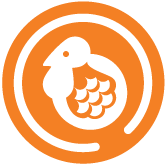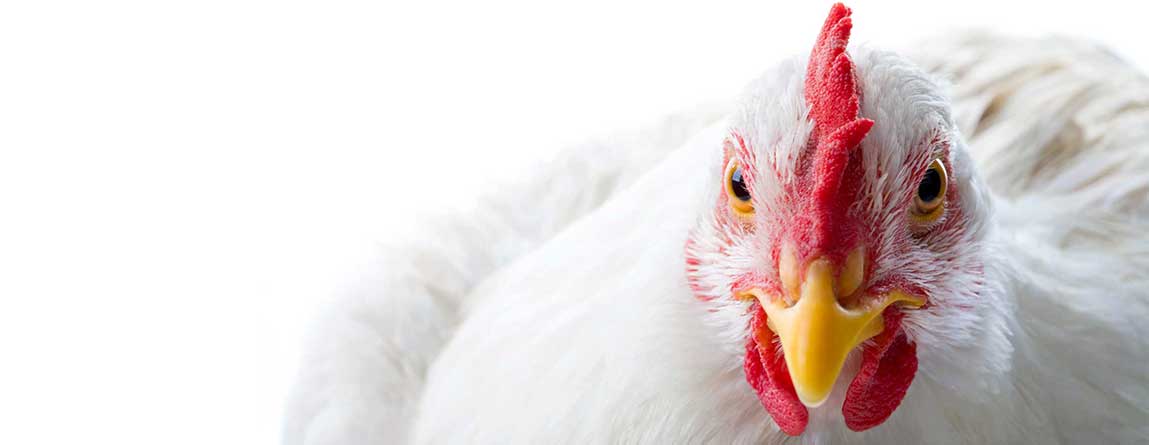
POULTRY
FIND THE BEST SOLUTION

Salmonellosis
Salmonellosis is a major problem, currently threatening the poultry sector worldwide. In addition to its zoonotic significance, it poses an epidemic threat to public health due to its involvement in food poisoning issues. Each time an outbreak occurs, it exposes the farmer to large economic losses and causes an epidemic threat to humans.
Diseases are caused by gram-negative Salmonella bacteria of the Enterobacteriaceae genus, which are facultative anaerobes, in the form of bacilli.
For several years now, salmonella control programs runned by authorieties (which are required in the member states of the European Union) have shown that the problem is has not been solved yet and in fact, is becoming one of the main threats to poultry production.
Salmonellosis can occur in all species of birds and at any age. Some serotypes of the Salmonella bacteria can cause some symptoms in poultry, although most do not cause any clinical signs.
There are many sources of infection of the breeding flock:
- sick birds and the disease vectors handlers, rodents);
- the environment (litter, equipment, facilities, trucks);
- feed and water.
The presence of other environmental factors contributing to disease symptoms should also be considered:
- excessive stockingdensity,
- inaccurate nutritional,
- other poultry diseases,
- temperature,
- inadequate humidity,
Protecting against the spread of Salmonella infections requires a number of measures on poultry farms:
- strict following of the principles of biosecurity with a hygienic regime;
- conducting a bacteriological and serological monitoring of flocks (including testing of parent flocks and day-old chicks),
- use of pathogen-free diets (e.g., subjected to appropriate chemical or heat treatment);
- immunization of poultry – prophylactic vaccinations as recommended;
- veterinarian-controlled use of antimicrobial drugs;
- use of preparations that ensure the protection of intestinal integrityafter propper inoculation of the gastrointestinal tract with beneficial bacterial flora and products that acidify the content of the gastrointestinal tract.
Prevention of bacterial diseases is a very important element in modern poultry production. Reducing the incidence of salmonella in this sector appears to be crucial to ensure food safety. Moreover, it is closely related to the problem of antimicrobial resistance and the search for alternatives to antibiotics, in order to protect their effectiveness. The widespread use of antibiotics and chemotherapeutics significantly increases the incidence of drug-resistant zoonotic pathogens, such as Salmonella. To protect against the incidence of diseases in the flock, poultry producers may replace antibiotics with alternatives such as phytobiotics, probiotics, prebiotics, symbiotics or organic acids.
Eubiotic solutions, which take into account the use of extracts, substances of plant origin such as essential oils, alkaloids, phenols, saponins, glycosides, in combination with other ingredients, contribute to maintaining the microbiological balance of the poultry digestive tract. The effects of phytobiotic and probiotic preparations are comparable to those obtained from the administration of feed antibiotics. Both can reduce the number of pathogenic bacteria, only their mode of action is different. Phytobiotics, as natural growth promoters, do not cause any side effects and do not carry the risk of dangerous residues and withdrawal periods that we face with typical antibiotic therapy. Instead, they help maintain intestinal integrity, improve production performance and stimulate the bodys’ natural immunity.
Phytobiotic mixtures have the potential to support the control and spread of Salmonella bacteria (as part of an antibiotic-free strategy), and ultimately reduce the incidence of human infections associated with the consumption of poultry products.
If you are interested in the details of the research being conducted on modern phytogenic solutions in animal production, we invite you to explore the #ADIFACTS tab or contact your AdiFeed® representative.
Bibliography:
- EFSA Panel on Animal Health and Welfare (AHAW), More,S. i in.; Assessment of listing and categorisation of animal diseases within the framework of the Animal Health Law (Regulation (EU) No 2016/429): Salmonella infection in poultry with serotypes of animal health relevance ( Pullorum, S. Gallinarum and S. arizonae); EFSA Journal 2017;15(8):4954.
- Gal-Mor O. ; Persistent infection and long-term carriage of typhoidal and nontyphoidal salmonellae; Clin Microbiol 2019, Rev 32:e00088-18.
- Iwiński H., Wódz K., Chodkowska K., Nowak T., Różański H.; In Vitro Evaluation of Antimicrobial Effect of Phytobiotics Mixture on Salmonella spp. Isolated from Chicken Broiler; Antibiotics 2022, 11, 868.
- Marek K.; Salmonele u drobiu w Polsce; Zeszyty problemowe postępów nauk rolniczych Nr 33, 1961, 129-141.
- Mazurkiewicz M.; Choroby drobiu. Praca zbiorowa pod redakcją M. Mazurkiewicza; Wydawnictwo Akademii Rolniczej we Wrocławiu, Wrocław 2019, 173-186.
- Różański H., Abramowicz P.; Związki fitoncydowe alternatywą dla chemioterapeutyków cz. I.; Hodowca Drobiu 10/2013, 1-4.
- Różański H., Abramowicz P.; Związki fitoncydowe alternatywą dla chemioterapeutyków cz. II.; Hodowca Drobiu 12/2013, 1-5.

